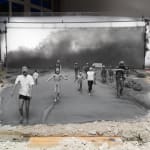 Behind the Scenes
Behind the Scenes
 Behind the Scenes
Behind the Scenes
 Behind the Scenes
Behind the Scenes
 Behind the Scenes
Behind the Scenes
 Behind the Scenes
Behind the Scenes
 Behind the Scenes
Behind the Scenes
 Behind the Scenes
Behind the Scenes
 Behind the Scenes
Behind the Scenes
 Behind the Scenes
Behind the Scenes
 Behind the Scenes
Behind the Scenes
 Behind the Scenes
Behind the Scenes
Jojakim Cortis & Adrian Sonderegger
27 1/2 x 41 3/8 in
Further images
-
(View a larger image of thumbnail 1
)

-
(View a larger image of thumbnail 2
)

-
(View a larger image of thumbnail 3
)

-
(View a larger image of thumbnail 4
)

-
(View a larger image of thumbnail 5
)

-
(View a larger image of thumbnail 6
)

-
(View a larger image of thumbnail 7
)

-
(View a larger image of thumbnail 8
)

-
(View a larger image of thumbnail 9
)

-
(View a larger image of thumbnail 10
)

-
(View a larger image of thumbnail 11
)

-
(View a larger image of thumbnail 12
)

-
(View a larger image of thumbnail 13
)

For many people, the image of the naked girl Kim Phúc is permanently burned into their
visual memory. In 1979, Gisèle Freund predicted that the photo would "remain forever
in the memory of those who have seen it. " For Phillip Knightley, the image of the girl,
also known as the "napalm girl," is "one of the most iconic war images of all time. " A
team of experts assembled by the Department of Journalism at New York University
ranked the photo 41st among the 100 best American journalistic works of the 20th
century. The photographer himself also found the image outstanding: "That photo
showed the world what the war in Viet Nam was about. People, regardless in their
nationality or language, could understand and relate to the tragedy. [...] The picture for
me and for many others could not have been more real. It was as authentic as the war
itself. "
Pictures do not simply reflect history. Rather, they are able to shape it as a pictorial act
itself. They are testimony and judgment in equal measure, and a remarkable obstinacy is
inherent in them. This is particularly true of the photograph of the girl Kim Phúc, which
has been reproduced millions of times as an authentic document of the Vietnam War
and has thus become an icon. As such, she leads her own life in the collective memory
and has generated her own reality, which has little in common with the one originally
depicted. Again and again, the image has been functionalized for the most diverse
political, commercial, and religious purposes and placed in new contexts.
The extensive literature on photography makes it possible to use it as an example to
study the relationship between history and the history of images, to analyze the process
of iconization of an image, and thus to fathom the process of exaggeration and
overwriting of the original images that follows every great war. At the same time, the
study of the production contexts and the history of reception provides insights into the
meaning and function of the media in modern war, and it exemplifies how cultural
memory functions in the global media public sphere.






